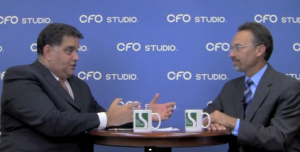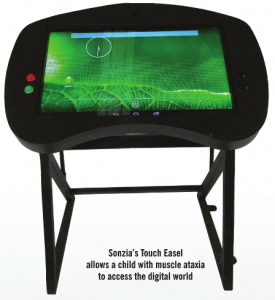As Seen in CFO Studio Magazine Q4 2015 Issue
A CHANGING BUSINESS MODEL DRIVES CHANGING DATA NEEDS
BY MARTIN DAKS
Gary Piscatelli, Senior Vice President and CFO of Hunter Douglas North America, tackles his job using a holistic approach, which is exactly how the company, the worldwide market leader in window coverings, established its prominence. The Netherlands-based company —with its North American headquarters in Pearl River, NY— stands out from competitors with its commitment to creating innovative product designs that fuse form with function to meet the evolving needs of the marketplace.
Piscatelli oversees the organization’s finance, technology, and human resources groups. Among other projects, he is helping Hunter Douglas to improve its data-gathering, reporting, and analytical systems in a way that enhances the company’s business operations. That means establishing more standardized information and systems without detracting from the magic that has driven so much success.
Looking at Information Anew
“Historically, operations were run in a somewhat decentralized manner,” he says, “but we are now moving toward greater centralization when it makes sense. We need a common language to ensure that metrics and measurements align, so when we talk across departments and functions, everyone is using the same definitions.”
Piscatelli joined the company a year and a half ago, following stints with Gillette Co., Nestle, and Timex Group, where he was involved in a comprehensive array of operations. Today, Piscatelli draws deeply on his previous experiences.
“The CFO is seen as a custodian of the company’s assets,” he says. “That reaches across many functions, and combined with the responsibility for business operations, means you’re basically connected to almost every part of the company. So you look for commonalities, ways that you can standardize and simplify functions and operations, not for the sake of standardization, but to help accelerate a company’s ability to achieve.”
Recently, Hunter Douglas converted the fabrication segment of its business from one that relied on a combination of independent and company-owned services, to one that is now entirely owned and operated by the company, bringing complete control of the manufacturing, assembling, and wholesale distribution aspects of the business under one umbrella. The increased vertical integration has helped to drive a change in the way the company looks at its data.
“When you’re tying together so many operations, it changes the way you gather and utilize your data,” says Piscatelli. “Ensuring that your data is accurate, and that you’re able to get at it, becomes a high-priority imperative. And it’s not a simple one. Among other challenges, it means gaining consensus on common standards, common hierarchy of information, and common goals.”
He sees the strategy to build a robust data architecture as both a logical and emotional journey. Building a comprehensive interconnected data set that links all the dimensions of a business at a level that drives understanding and decision-making without being overly complex is not simple. Getting it done with companywide consensus can be even more challenging. As challenging a task as this may be, capturing the right data is a critical enabler of strong business partnering.
Piscatelli sees partnering as an essential role of finance, but the function needs to first ensure it’s got the basics covered. To begin with, he says, “a company needs a solid foundation made up of accurate accounting and a strong system of internal controls. Once those are in place, a CFO and his or her team can drive financial improvement through cost containment, top-line growth, and delivering more bottom-line value.”
Sharing Data Drives Efficiency
“If you want to create value, you have to ensure that everyone has access to the information they need to do their job right,” he says. “Regardless of whether you’re talking about production—which involves keeping tabs on everything from inventory to manufacturing—or product, or branding activities, or cost centers, or customer information, you need to be able to get real-time information so you know where the company is right now, and use that as a planning guide to determine where you want to aim in the future.”
Piscatelli is well qualified to address and integrate these myriad concepts — his background includes responsibility for purchasing, financing, information technology, and other functions. He also understands the human angle.
At Gillette, prior to leading finance for the Personal Care Business, he served as Director of Corporate Finance, where he led a global SAP implementation that included revamping data architecture, accounting, reporting, and analytics. Afterward, he was Senior Vice President and CFO at Timex Group, where, among other things, he drove changes in reporting and analytics that he believed helped enable the transformation of the financial function from accountants to involved business partners.
A lot of the information may be on a sales invoice, but it’s useless unless a data system can capture it and present it in a meaningful manner. “The key is to structure a system that can capture data from disparate sources and integrate it all in a way that makes sense,” says Piscatelli.
As part of the effort, Piscatelli is talking to employees at all levels and functions across the company, and will continue to, asking key questions that will better enable systems that will aid Hunter Douglas to deliver more value. That’s where the human element comes into view.
“People are more likely to be candid with you if they know their statements are being taken seriously,” he says. “We let our co-workers know that they are an integral part of the Hunter Douglas operations, and that their input and activity will be vital to the company’s success.”
In addition to updating its internal data-gathering and reporting models, the company has recently had a changing of the guard in the C-suite. At the beginning of July, longtime Hunter Douglas North America CEO, Marvin B. Hopkins, retired. Ron Kass was named as the new President and CEO. Kass joined the company in 2005, previously serving as President of both the Hunter Douglas Design Products Group and the Independent Fabricator Group of companies, and as Executive Vice President of Marketing, where he oversaw brand marketing, advertising, and communications for Hunter Douglas.
“Our underlying strategy has not changed,” says Piscatelli. “Hunter Douglas has a long legacy of bringing to market well-designed, high-quality, and otherwise superior custom window treatments that are both profitable for the company and sought after by consumers. We are well positioned to continue this trend moving forward to maintain our leadership position.”




